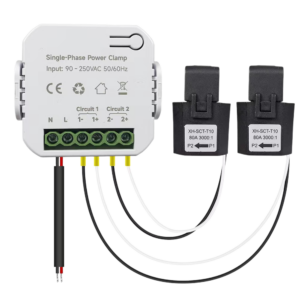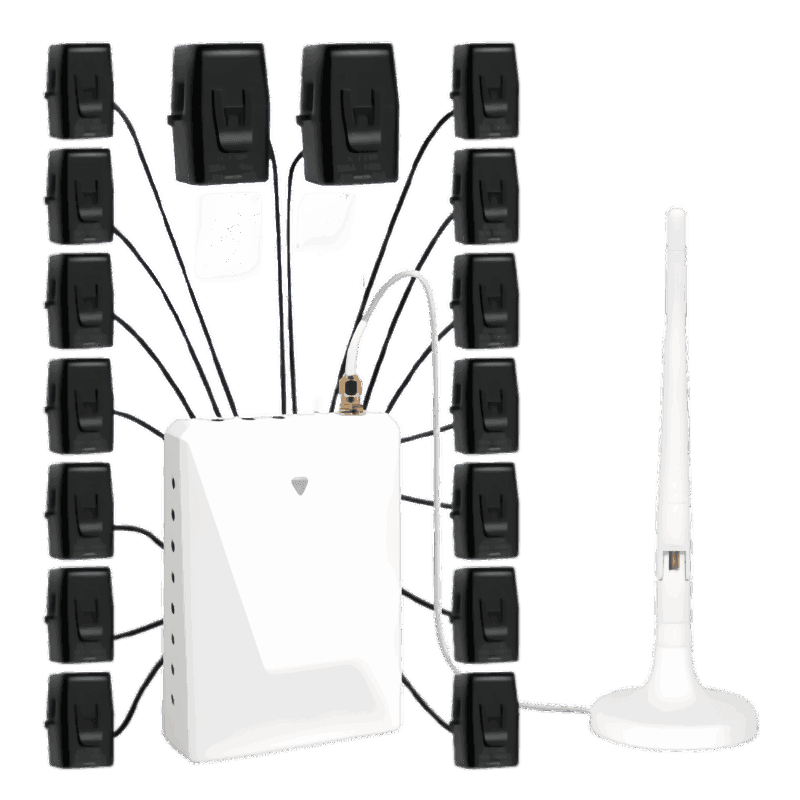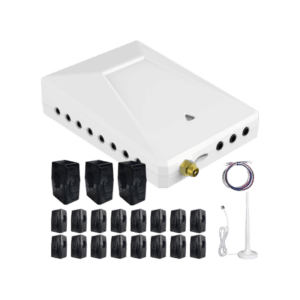กำลังคิดที่จะติดตั้งเครื่องใช้ไฟฟ้าใหม่ใช่ไหม?
บางทีคุณอาจกำลังย้ายเข้าบ้านใหม่และสงสัยว่าห้องซักรีดของคุณมีปลั๊กไฟที่เหมาะสมสำหรับเครื่องอบผ้าของคุณหรือไม่ หรือบางทีคุณอาจเพิ่งซื้อเครื่องปรับอากาศแบบพกพาหรือแม้แต่เครื่องชาร์จรถยนต์ไฟฟ้า หนึ่งในคำถามแรกๆ ที่ผุดขึ้นมานั้นเรียบง่ายแต่สำคัญ:วิธีบอกว่าเต้ารับเป็น 120V หรือ 240V?
ในบ้านเรือนในสหรัฐอเมริกามีเต้ารับไฟฟ้าทั้งสองแบบ โดยทั่วไปแล้วปลั๊กไฟแบบมาตรฐานจะอยู่ใกล้กับโคมไฟหรือทีวีของคุณ120 โวลต์ในขณะที่เครื่องใช้ไฟฟ้าที่มีความต้องการสูง เช่น เตาอบ เครื่องทำน้ำอุ่น หรือเครื่องปรับอากาศส่วนกลาง มักต้องการ240 โวลต์การเสียบปลั๊กผิดไม่เพียงแต่ทำให้ไม่สะดวกเท่านั้น แต่ยังอาจทำให้เครื่องใช้ไฟฟ้าทำงานผิดปกติ เบรกเกอร์สะดุด หรือแม้แต่ทำให้อุปกรณ์เสียหายได้อีกด้วย
ข่าวดี? คุณไม่จำเป็นต้องเป็นช่างไฟฟ้าก็เข้าใจเรื่องนี้ได้ การเรียนรู้ความแตกต่างที่สำคัญจะช่วยให้คุณระบุแรงดันไฟฟ้าของเต้ารับได้อย่างรวดเร็วและปลอดภัย โดยไม่ต้องเปิดแผงหรือสัมผัสสายไฟที่มีกระแสไฟฟ้า คู่มือนี้จะแนะนำพื้นฐาน อธิบายวิธีแยกแยะเต้ารับไฟฟ้า 240V กับ 120V ได้อย่างรวดเร็ว และอธิบายสิ่งที่ควรทำหากจำเป็นต้องอัปเกรด
ทำความเข้าใจพื้นฐาน: 120V เทียบกับ 240V ในบ้านเรือนในสหรัฐอเมริกา
ก่อนที่คุณจะเริ่มตรวจสอบปลั๊กและฉลาก ควรทำความเข้าใจก่อนว่าทำไมบ้านในสหรัฐอเมริกาถึงมีเต้ารับไฟ 120V เทียบกับ 240Vประการแรก ระบบไฟฟ้าของอเมริกาถูกสร้างขึ้นบนแหล่งจ่ายไฟแบบแยกเฟส 120/240Vซึ่งหมายความว่าบ้านของคุณได้รับสายไฟ “ร้อน” สองเส้นและสายนิวทรัลหนึ่งเส้นจากบริษัทสาธารณูปโภค คุณสามารถรับไฟ 120 โวลต์หรือ 240 โวลต์ได้ ขึ้นอยู่กับวิธีการเดินสายวงจร
- วงจรไฟ 120 โวลต์:นี่คือรูปแบบที่พบได้บ่อยที่สุด แต่ละวงจรใช้สายไฟร้อนหนึ่งเส้นและสายกลางหนึ่งเส้น จ่ายไฟ 120 โวลต์ ซึ่งเป็นมาตรฐานสำหรับเต้ารับไฟฟ้าทั่วไปและเครื่องใช้ไฟฟ้าขนาดเล็ก
- วงจรไฟ 240 โวลต์:สายไฟฟ้าเหล่านี้ใช้สายไฟร้อนทั้งสองเส้นร่วมกัน ซึ่งทำให้แรงดันไฟฟ้าเพิ่มขึ้นเป็นสองเท่าเป็น 240 โวลต์ เนื่องจากสามารถจ่ายไฟได้มากขึ้น จึงนิยมใช้กับเครื่องใช้ไฟฟ้าที่ใช้งานหนัก
นี่คือข้อมูลอ้างอิงด่วน:
| แรงดันไฟฟ้า | เครื่องใช้ไฟฟ้าทั่วไป |
|---|---|
| 120 V | โคมไฟ, ทีวี, แล็ปท็อป, ไมโครเวฟ, เครื่องชงกาแฟ |
| 240 V | เครื่องอบผ้าไฟฟ้า เตาอบ เครื่องทำน้ำอุ่น เครื่องปรับอากาศส่วนกลาง เครื่องชาร์จรถยนต์ไฟฟ้า |
จุดสับสนที่พบบ่อยประการหนึ่งคือความแตกต่างระหว่างเต้ารับไฟ 110V และ 120Vในทางปฏิบัติแล้ว ทั้งสองคำนี้เหมือนกัน ผู้คนมักใช้คำเหล่านี้แทนกันได้ แต่ระบบสายไฟภายในบ้านสมัยใหม่ในสหรัฐอเมริกามีมาตรฐานอยู่ที่ 120V เมื่อคุณเห็นฉลากเครื่องใช้ไฟฟ้าที่เขียนว่า "110V" แสดงว่าออกแบบมาเพื่อใช้กับแหล่งจ่ายไฟ 120V ในปัจจุบัน
ลองคิดดูแบบนี้:
- 120V = ชีวิตประจำวัน
- 240V = กำลังไฟสูง
การทำความเข้าใจการแยกส่วนนี้เป็นพื้นฐานในการรับรู้ว่าคุณกำลังจัดการกับเต้ารับใดในบ้านของคุณเอง
วิธีง่ายๆ ในการบอกว่าเต้ารับไฟฟ้าเป็น 120 V หรือ 240 V
ตอนนี้เรามาพูดถึงด้านปฏิบัติกันบ้างดีกว่าเต้ารับไฟ 240V มีลักษณะอย่างไรและมันแตกต่างจากไฟ 120V ทั่วไปอย่างไร คุณไม่จำเป็นต้องใช้เครื่องมือพิเศษสำหรับการตรวจสอบครั้งแรกนี้ แค่ใช้สายตาและสามัญสำนึกเล็กน้อยก็พอ
1. ดูรูปร่างของเต้าเสียบ
- เต้ารับไฟ 120 โวลต์:รูปแบบที่พบมากที่สุดมีช่องแนวตั้งสองช่องและรูกลมหนึ่งช่องสำหรับพื้น คุณจะเห็นสิ่งเหล่านี้อยู่ทุกที่ ไม่ว่าจะเป็นห้องนอน ห้องนั่งเล่น ห้องครัว สำหรับเครื่องใช้ไฟฟ้าขนาดเล็ก
- เต้ารับไฟ 240 โวลต์: ใหญ่ขึ้นมาก ขึ้นอยู่กับอุปกรณ์ คุณอาจเห็นช่องรูปตัว T, รูปแบบรูปตัว L หรือการจัดเรียงแบบสาม/สี่ขาเต้ารับเหล่านี้มักจะมีขนาดใหญ่กว่าและสามารถติดตั้งใกล้กับพื้นหรือในบริเวณอเนกประสงค์ เช่น ห้องซักรีด
- หากคุณยังไม่แน่ใจ ให้ค้นหารูปภาพของ “เต้ารับ 120V กับ 240V” เพื่อเปรียบเทียบ — ภาพสามารถบอกความแตกต่างได้อย่างชัดเจน
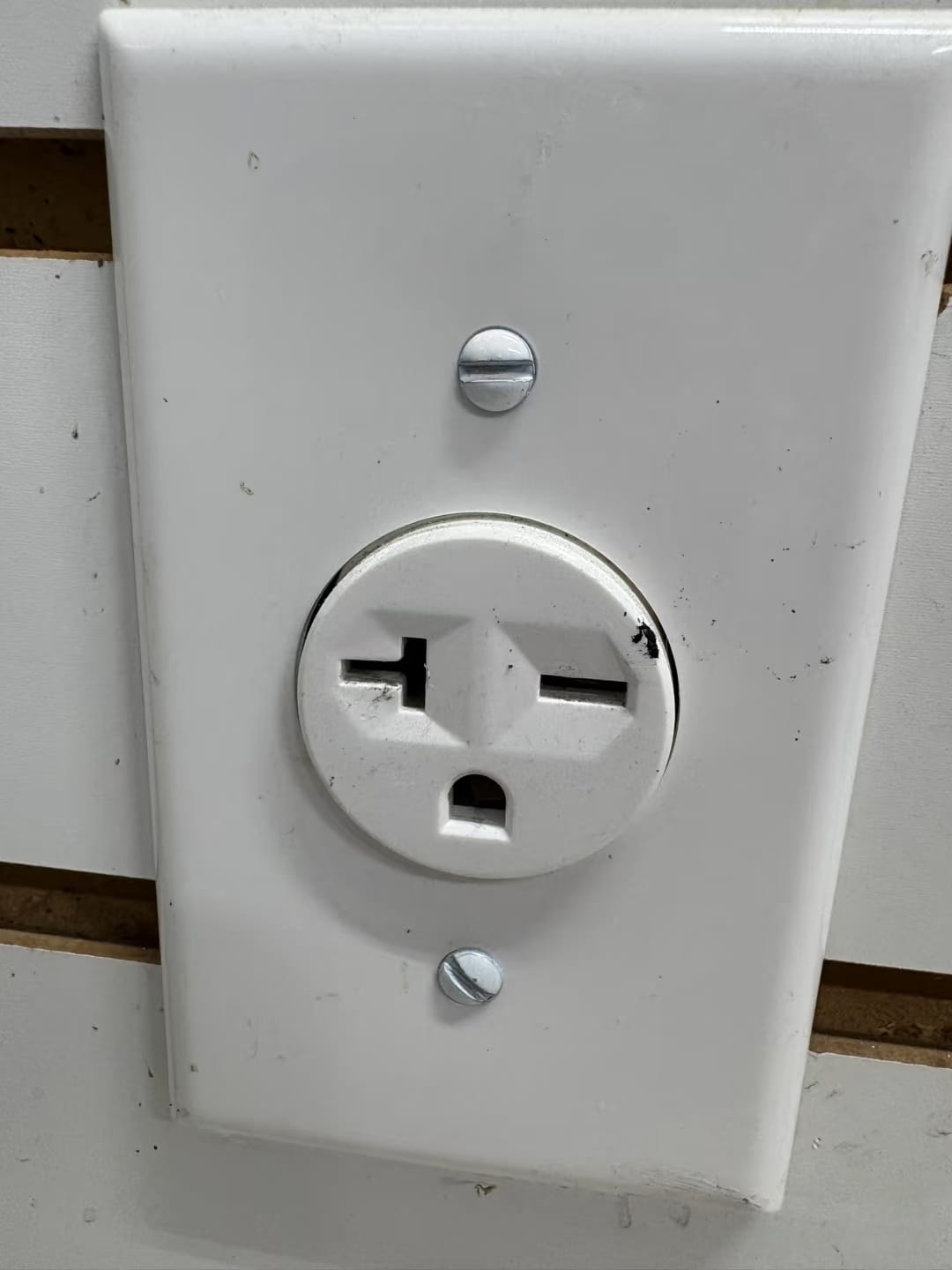
2. ตรวจสอบปลั๊ก
อีกวิธีหนึ่งในการบอกได้คือการดูปลั๊กเครื่องใช้ไฟฟ้า:
- อุปกรณ์ในชีวิตประจำวัน เช่น โคมไฟ เครื่องปิ้งขนมปัง หรือทีวีปลั๊กแบบบาง สองขา หรือสามขาที่พอดีกับเต้ารับไฟ 120V
- เครื่องใช้ไฟฟ้าสำหรับงานหนัก เช่น เครื่องอบผ้า เตา หรือเครื่องชาร์จรถยนต์ไฟฟ้า มาพร้อมกับปลั๊กที่ใหญ่และหนากว่าสิ่งเหล่านี้ได้รับการออกแบบมาโดยตั้งใจเพื่อให้ไม่สามารถใส่เข้ากับเต้ารับไฟ 120V ได้. นี้จะป้องกันไม่ให้เกิดความไม่ตรงกันอันเป็นอันตราย
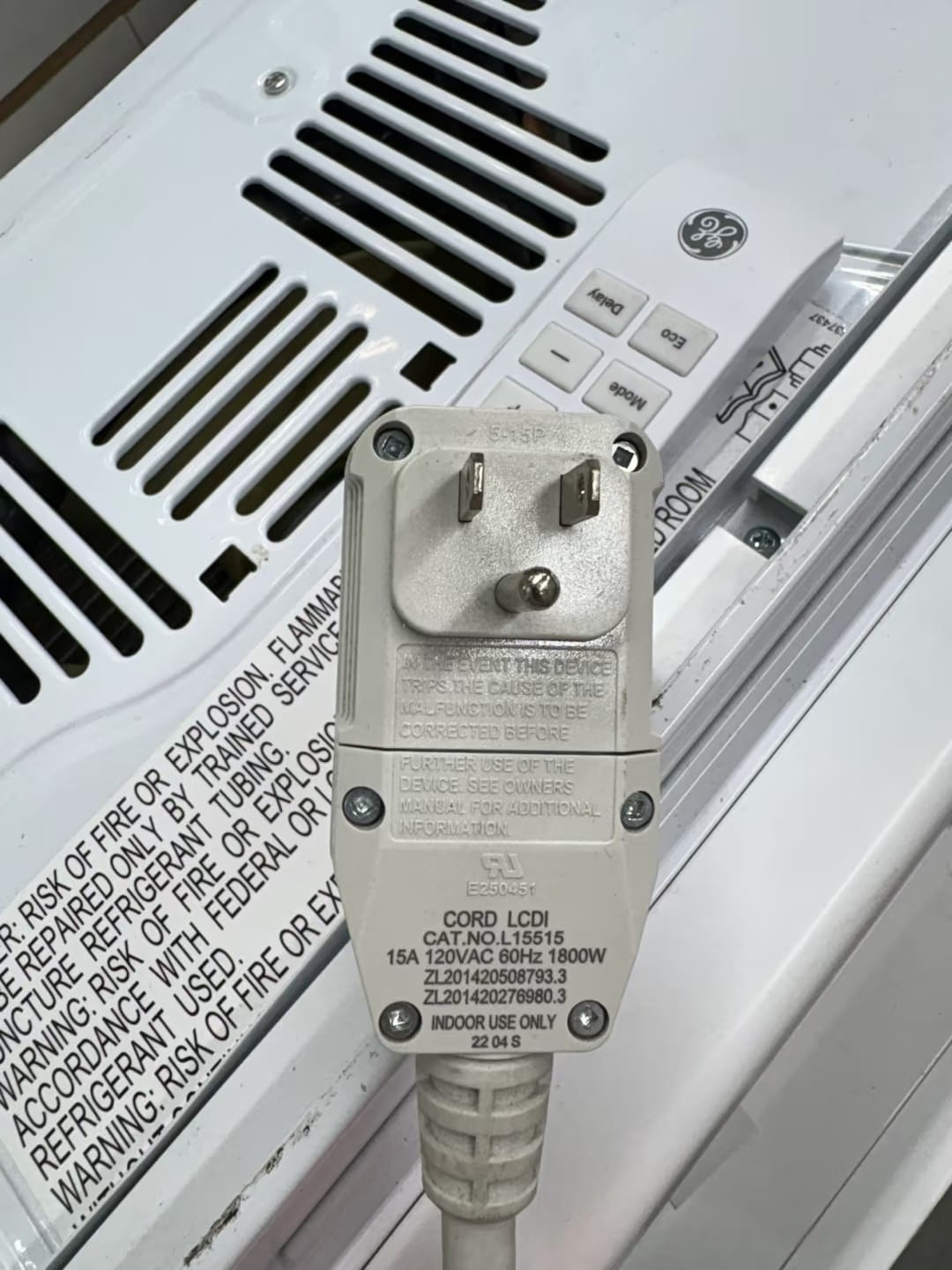
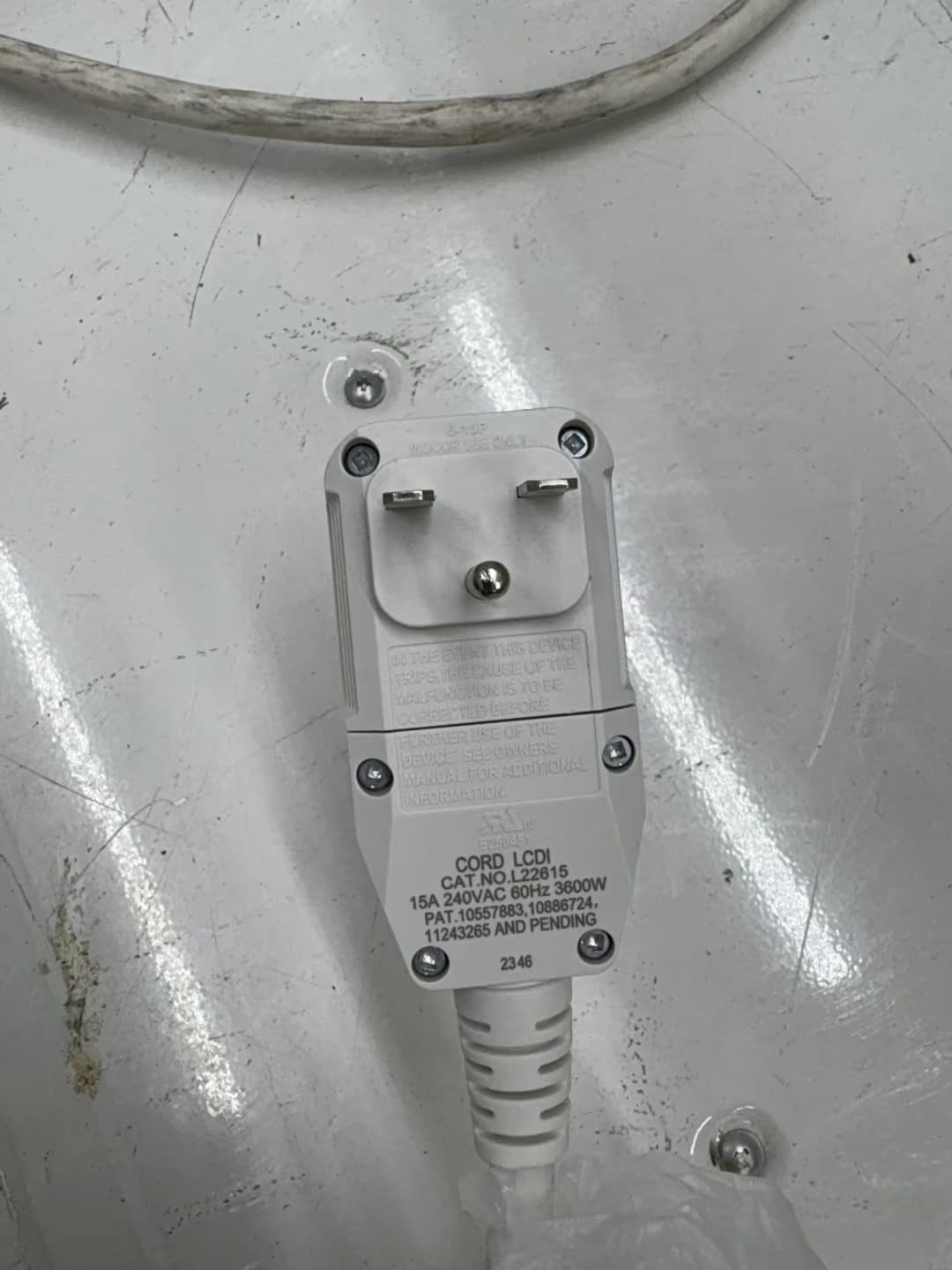
3. อ่านฉลากเครื่องใช้ไฟฟ้า
เครื่องใช้ไฟฟ้าทุกชนิดต้องระบุแรงดันไฟฟ้าขาเข้า มองหาข้อความเช่น:
- “อินพุต: 120V ~ 60Hz”→ ปลอดภัยสำหรับเต้ารับมาตรฐาน
- “อินพุต: 240V ~ 60Hz”→ ต้องใช้วงจรพิเศษ 240V
โดยปกติแล้วคุณจะพบฉลากนี้อยู่ที่ด้านหลังของตัวเครื่อง ใกล้กับสายไฟ หรือในคู่มือผู้ใช้ ขั้นตอนนี้มีประโยชน์อย่างยิ่งสำหรับเครื่องปรับอากาศแบบติดหน้าต่าง หรือเครื่องใช้ไฟฟ้านำเข้าที่ปลั๊กไฟอาจไม่บอกแรงดันไฟฟ้า
เพียงแค่ตรวจสอบ 3 อย่างนี้ ได้แก่ รูปร่างเต้ารับ ขนาดปลั๊ก และฉลาก คุณก็จะสามารถระบุแรงดันไฟเต้ารับได้อย่างมั่นใจ โดยไม่ต้องเปิดแผงเบรกเกอร์หรือสัมผัสสายไฟ
เคล็ดลับสําหรับมือโปร:เครื่องมือเช่นจอภาพพลังงานแบบแยกเฟสหรือแม้กระทั่งเครื่องตรวจสอบพลังงานหลายวงจรสำหรับเครื่องใช้ไฟฟ้า 240Vสามารถทำให้กระบวนการนี้ง่ายขึ้น สำหรับภาพรวมที่ใหญ่ขึ้นของการจัดการพลังงานบ้านอัจฉริยะทดลองใช้ฟรีเครื่องคิดเลข HomePanel.
เมื่อคุณจะเห็นเต้ารับไฟฟ้า 240 โวลต์โดยทั่วไป
หากคุณเดินผ่านบ้านทั่วๆ ไปในสหรัฐฯ คุณจะเห็นเต้ารับไฟ 120 โวลต์จำนวนมาก แต่มีเพียงไม่กี่แห่งเท่านั้นเต้ารับไฟ 240 โวลต์นั่นเป็นเพราะปลั๊กเหล่านี้ถูกสงวนไว้สำหรับเครื่องใช้ไฟฟ้าที่ต้องการพลังงานมากกว่าที่ปลั๊กมาตรฐานจะจ่ายให้ได้
นี่คือสถานที่ที่คุณจะพบเจอบ่อยที่สุด:
- ห้องซักรีด– เครื่องอบผ้าไฟฟ้าส่วนใหญ่ต้องใช้ไฟ 240 โวลต์ หากคุณถามตัวเองว่าเครื่องอบผ้าของฉันต้องใช้ไฟ 240 โวลต์หรือเปล่า?คำตอบคือใช่ เว้นแต่ว่าจะเป็นรุ่นกะทัดรัดหรือใช้พลังงานแก๊ส
- ห้องครัวเตาอบขนาดใหญ่ เตาประกอบอาหาร และไมโครเวฟแบบติดตั้งบางรุ่นต้องใช้ไฟ 240 โวลต์เพื่อจัดการกับองค์ประกอบความร้อน
- โรงรถ– เครื่องชาร์จ EV กำลังได้รับความนิยมเพิ่มมากขึ้น และเครื่องชาร์จระดับ 2 เกือบทั้งหมดต้องใช้วงจรไฟ 240V
- พื้นที่กลางแจ้ง/พื้นที่อเนกประสงค์– คอมเพรสเซอร์เครื่องปรับอากาศส่วนกลาง ปั๊มความร้อน และปั๊มน้ำบาดาลโดยทั่วไปทำงานที่ 240 โวลต์
เคล็ดลับ: ดูที่แผงเบรกเกอร์
หากคุณต้องการยืนยันว่าวงจรเป็น 120V หรือ 240V ให้ตรวจสอบกล่องเบรกเกอร์ของคุณ:
- เบรกเกอร์ขั้วเดี่ยว= วงจร 120V
- เบรกเกอร์สองขั้ว= วงจร 240V
เนื่องจากเบรกเกอร์สองขั้วเชื่อมต่อกับสายไฟ “ร้อน” ทั้งสองเส้นในระบบสปลิตเฟส จ่ายไฟเต็ม 240 โวลต์ คุณมักจะเห็นเบรกเกอร์สองขั้วติดป้ายว่า “เครื่องอบผ้า” “เตาไฟฟ้า” “เครื่องปรับอากาศ” หรือ “เครื่องทำน้ำอุ่น”
คำเตือนด้านความปลอดภัย
ในขณะที่การเปิดแผงประตูของคุณก็เป็นเรื่องปกติดูห้ามถอดฝาครอบหรือสัมผัสสายไฟ เว้นแต่คุณจะมีคุณสมบัติเหมาะสม หากไม่แน่ใจ ให้ถ่ายรูปเบรกเกอร์ของคุณแล้วขอให้ช่างไฟฟ้าที่มีใบอนุญาตยืนยัน
คุณสามารถแปลงเต้ารับไฟ 120V เป็น 240V ได้หรือไม่?
เจ้าของบ้านมักสงสัยว่า:คุณสามารถแปลงไฟ 120V เป็น 240V ได้ไหมหากคุณยังไม่มีเต้ารับที่ถูกต้อง คำตอบสั้นๆ คือ ใช่—แต่มันไม่ง่ายเหมือนการเปลี่ยนเต้ารับ
ทำไมมันจึงไม่ใช่งาน DIY
วงจร 240V ต้องใช้:
- สายไฟร้อนสองเส้นแทนที่จะเป็นหนึ่ง
- Aเบรกเกอร์สองขั้วในแผงของคุณ
- ขนาดลวดที่ถูกต้องเพื่อรองรับภาระที่เพิ่มขึ้น
นั่นหมายความว่าการแปลงเต้ารับไฟฟ้าต้องเดินสายไฟใหม่จากแผงเบรกเกอร์และตรวจสอบให้แน่ใจว่าทุกอย่างเป็นไปตามมาตรฐาน การพยายามทำสิ่งนี้ด้วยตนเองโดยไม่ได้รับการฝึกอบรมอย่างเหมาะสมอาจส่งผลให้เกิดอันตรายจากไฟไหม้ การละเมิดมาตรฐาน หรือเครื่องใช้ไฟฟ้าเสียหายได้
ต้นทุนโดยทั่วไป
Theค่าติดตั้งเต้ารับไฟ 240Vขึ้นอยู่กับระยะห่างของเต้ารับไฟฟ้าจากแผงไฟฟ้า ว่าแผงไฟฟ้าของคุณมีพื้นที่สำหรับเบรกเกอร์ตัวอื่นหรือไม่ และจำเป็นต้องมีใบอนุญาตหรือไม่ โดยเฉลี่ยแล้ว เจ้าของบ้านใช้จ่ายดังนี้:
- $250–$400สำหรับการติดตั้งแบบง่ายๆ ใกล้แผงควบคุม
- $500–$1,000+หากต้องเดินสายไฟใหม่ข้ามห้องหลายห้องหรือไปยังโรงรถแยก
หากคุณกำลังวางแผนติดตั้งเครื่องชาร์จ EV ปั๊มความร้อน หรืออัปเกรดเครื่องใช้ไฟฟ้าขนาดใหญ่ในอนาคต ควรติดตั้งเต้ารับไฟ 240V โดยเร็วที่สุด
แนวทางปฏิบัติที่ดีที่สุด
จ้างคนเสมอช่างไฟฟ้าที่มีใบอนุญาตไม่เพียงแต่การทำงานจะปลอดภัยยิ่งขึ้น แต่ยังช่วยให้การติดตั้งของคุณผ่านการตรวจสอบและเป็นไปตามข้อกำหนดรหัสไฟฟ้าแห่งชาติ (NEC).
บทสรุป: สรุปโดยย่อ
ตอนนี้คุณน่าจะรู้สึกมั่นใจแล้ววิธีบอกว่าเต้ารับเป็น 120V หรือ 240Vในบ้านของคุณ สิ่งสำคัญที่ต้องจำ:
✅เต้ารับไฟ 120 โวลต์จ่ายพลังงานให้กับอุปกรณ์ในชีวิตประจำวัน เช่น ทีวี โคมไฟ และเครื่องชงกาแฟ
✅เต้ารับไฟ 240 โวลต์จัดการเครื่องใช้ไฟฟ้าขนาดใหญ่ เช่น เครื่องอบผ้า เตาอบ เครื่องทำน้ำอุ่น และเครื่องชาร์จรถยนต์ไฟฟ้า
👀 คุณสามารถระบุพวกเขาได้โดยรูปร่างเต้ารับ ขนาดปลั๊ก หรือฉลากเครื่องใช้ไฟฟ้า.
🛡️ หากคุณไม่แน่ใจ ให้ใช้เครื่องทดสอบแรงดันไฟฟ้า หรือที่ดีกว่านั้น ให้โทรหาช่างไฟฟ้าที่มีใบอนุญาต
และหากคุณต้องการไปอีกขั้นหนึ่งจอภาพพลังงานอัจฉริยะช่วยให้คุณเห็นภาพชัดเจนว่าบ้านของคุณใช้ไฟฟ้าทั้ง 120V และ 240V อย่างไร ความรู้นี้ไม่เพียงแต่ช่วยให้คุณหลีกเลี่ยงข้อผิดพลาด แต่ยังช่วยประหยัดค่าไฟฟ้าอีกด้วย
FAQ
เต้ารับมาตรฐานสามารถเป็นทั้ง 120V และ 240V ได้หรือไม่?
ไม่ครับ สายไฟแต่ละเส้นถูกออกแบบมาแตกต่างกัน และออกแบบให้มีรูปทรงเต้ารับที่แตกต่างกันเพื่อป้องกันอุบัติเหตุ เต้ารับไฟฟ้ามักจะเป็นแบบใดแบบหนึ่งเสมอ
การทดสอบด้วยมัลติมิเตอร์ปลอดภัยหรือไม่?
ใช่ แต่เฉพาะเมื่อคุณมีประสบการณ์เท่านั้น แบบไม่สัมผัสเครื่องทดสอบแรงดันไฟฟ้าสำหรับเต้ารับไฟฟ้าภายในบ้านปลอดภัยกว่าสำหรับผู้เริ่มต้น หากมีข้อสงสัย ให้ปรึกษาช่างไฟฟ้า
ปลั๊กอัจฉริยะบอกแรงดันไฟฟ้าให้คุณทราบหรือไม่?
ปลั๊กอัจฉริยะส่วนใหญ่ไม่ได้วัดแรงดันไฟฟ้าโดยตรง พวกมันสามารถแสดงการใช้พลังงานสำหรับอุปกรณ์ 120V แต่สำหรับการตรวจสอบวงจรทั้งหมด รวมถึงเครื่องใช้ไฟฟ้า 240V—คุณจะต้องมีเครื่องตรวจสอบพลังงานอัจฉริยะ
ถ้าเสียบไฟ 120V เป็น 240V จะเกิดอะไรขึ้น?
มันสามารถทำลายอุปกรณ์ได้ทันที นี่คือเหตุผลเต้ารับความปลอดภัย 120V 240Vมีความสำคัญมาก—ปลั๊กและเต้าเสียบเครื่องใช้ไฟฟ้าได้รับการออกแบบมาโดยตั้งใจไม่ให้พอดีกัน
เครื่องอบผ้าของฉันต้องใช้ไฟ 240V หรือไม่?
เครื่องอบผ้าไฟฟ้าขนาดใหญ่ส่วนใหญ่ในสหรัฐอเมริกาใช้ไฟ 240 โวลต์ เครื่องอบผ้าแบบกะทัดรัดและเครื่องอบผ้าแบบใช้แก๊สอาจใช้ไฟเพียง 120 โวลต์ ดังนั้นควรตรวจสอบฉลากก่อนซื้อหรือติดตั้งเสมอ
